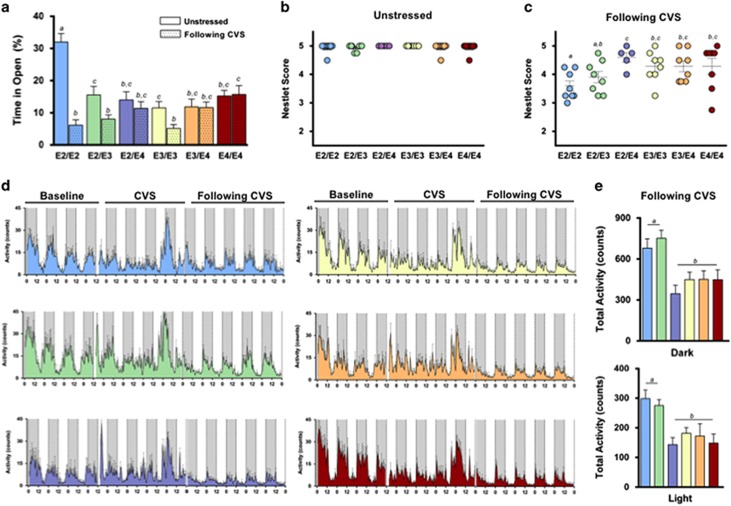Figure 3.
Chronic variable stress increases anxiety and causes behavioral and circadian disturbances in E2/E2 and E2/E3 mice. (a) E2/E2, E2/E3, and E3/E3 mice all showed significant increases in anxiety-like behavior following chronic variable stress (CVS), as evidenced by a significantly lower time spent in the open (anxiogenic) area of the elevated zero maze. E2/E2 mice, in particular, showed a marked increase in anxiety following CVS. Conversely, mice with E4 (E3/E4, E4/E4, and E2/E4) did not show changes in anxiety after CVS. (b) Nesting scores did not differ by APOE genotype under normal, unstressed conditions. (c) Following CVS, all mice constructed significantly less complex nests than at baseline. E2/E2 mice, and to a lesser degree E2/E3 mice, constructed less complex nests following CVS compared with other groups. (d) Home-cage activity was recorded for individual mice during a 4- day acclimation period (baseline), 5 days of CVS, and for 5 days after trauma (following CVS). (e) E2/E2 and E2/E3 mice were hyperactive during both the dark (active) and light (inactive) cycles following CVS. Groups labeled with dissimilar letters are significantly different (p<0.05, analysis of variance (ANOVA) followed by t-test).

